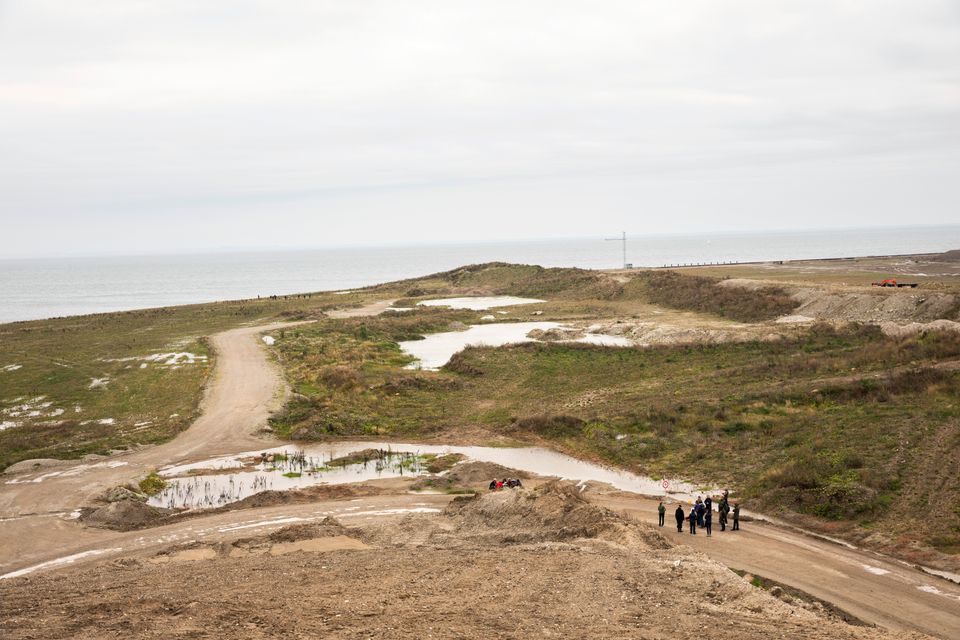In the end, it was an easy decision when Danmarks Akvarium closed its doors on 31 October 2012 to eventually move to ‘The Blue Planet’, its new, state-of-the-art home in Tårnby, in the spring of 2013.
Danmarks Akvarium had long ago outgrown its antiquated building in Charlottenlund, which first opened to the public in 1937.
But it left many memories. Throughout its history, the dark, watery vaults of the old aquarium have held their fair share of mystery: from Denmark’s biggest environmental scandal in the 1970s to the crucial role the building played in the country’s resistance movement during the Second World War Nazi occupation.
Who’d look under a tank …
Perhaps their biggest contribution to the nation occurred between 1942 and 1945 during the Nazi occupation of Denmark, shortly after the building’s inauguration.
The aquarium’s first head, Mogens Højgaard, was a known sympathiser of the resistance movement and helped those fighting the Nazi occupation to store a hefty stash of arms under the aquarium’s basement alongside the large reservoir tank.
It was the perfect place for a secret arsenal. At 20 metres long and two metres wide, the tank runs 20 metres deep and is certainly not the kind of place you’d just happen to stroll past – few people, not even aquarium employees, had access to this part of the building’s vaults.
It was dark, deep and kept at a constantly chilly temperature in accordance with its actual purpose: to ensure parasites and bacteria were dead before the aquariums on the higher levels were filled.
The arsenal is believed not only to have contained small firearms but larger weapons too, and a collection of this size was certainly a risky undertaking. What would have happened to the aquarium and Højgaard – who must have been the one to provide the resistance with the hiding place – wouldn’t have been pretty if the Nazis ever learned of its secondary occupation.
The legendary arsenal
Likewise, it’s unlikely we’ll ever learn what the weapons were used for, or how crucial their role actually was – resistance members simply took what they needed and left.
After Højgaard’s death in the 1960s, the story of the weapons arsenal took on a mythical status – one of numerous local anecdotes told by the aquarium’s oldest employees but never verified.
Then, a few years ago, cleaning staff at the aquarium found a helmet of the kind used by the Danish resistance fighters, which had lain forgotten under a small step for over 50 years.
Murky waters
Less honourable was the aquarium’s role in what has been described as Denmark’s largest ever environmental cover-up.
In 1973, two aquarium researchers, the husband-and-wife team Inge and Jan Boetius, were ordered by the Ministry of Fisheries to conduct a report on Kærgård Plantage, an area of Jutland’s coast close to Esbjerg.
Potentially hazardous waste had been dumped there by the nearby Grindsted Works since 1956 – all known and approved by public authorities. The pair were to assess the effect the chemicals might be having on saltwater fishes.
Implicated in a conspiracy
The Boetius report concluded that although no negative effects had been found on any fish, these results should be viewed with caution, as it was impossible to predict any long-term consequences. The newly-established Environment Ministry, however, used the report as evidence that no further course of action was needed.
When the extent of the government-approved dumping became public knowledge, it developed into an environmental scandal implicating the Boetiuses and the then-head of the aquarium, Arne Schiøtz, as part of a ministerial conspiracy.
Schiøtz maintained that the Environment Ministry had misinterpreted the report’s conclusions – and just managed to cling to his job throughout the storm.














